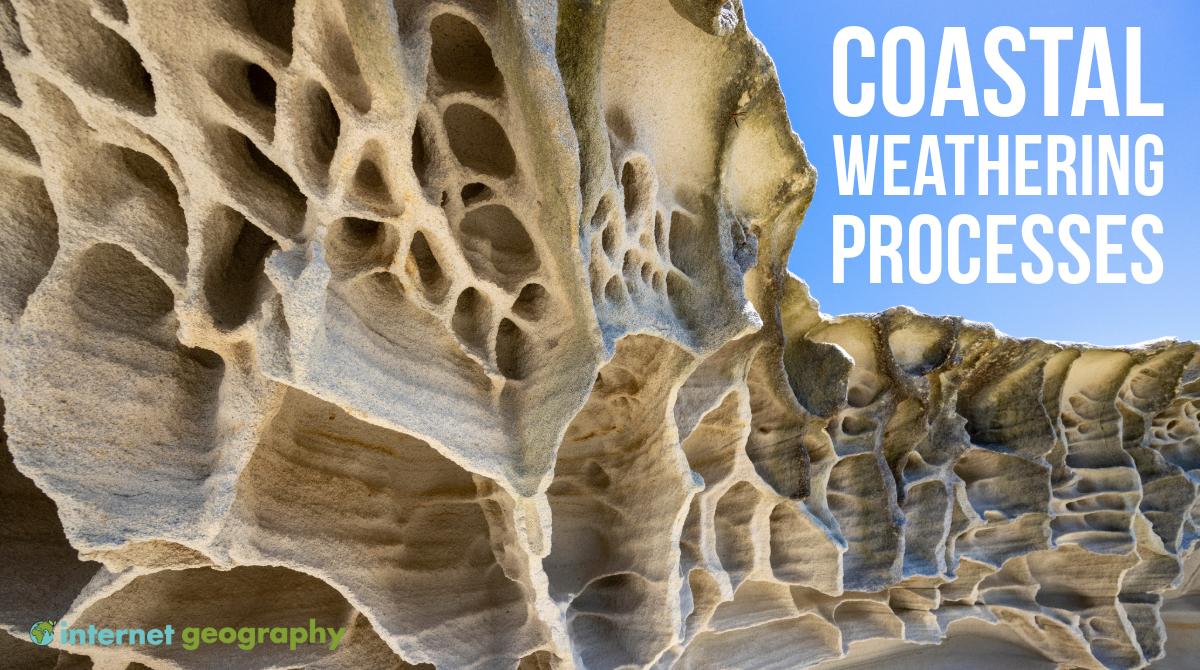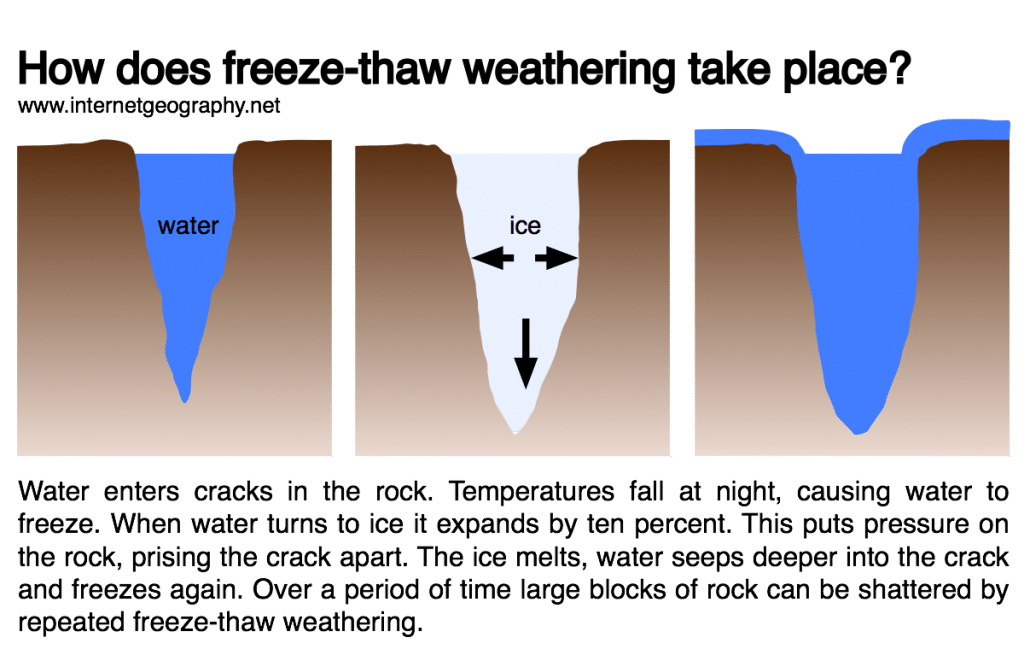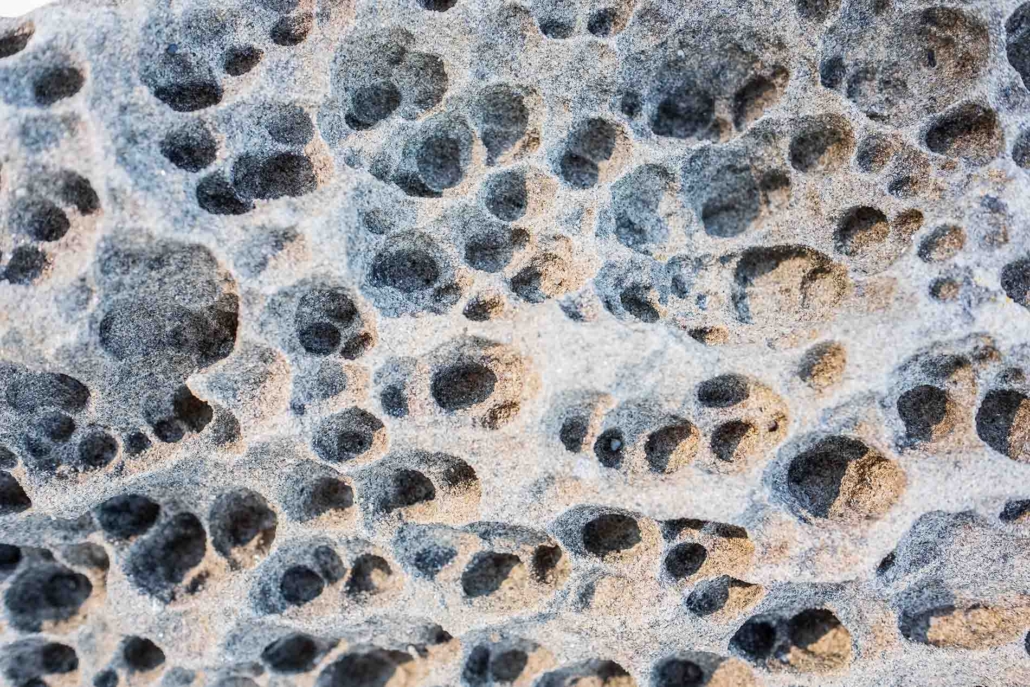Coastal Weathering Processes
In coastal geography, weathering plays a crucial role in shaping coastlines. It refers to the breakdown of rocks and minerals along the shore caused by different environmental forces. There are three primary types of weathering: mechanical, chemical, and biological, but here, we’ll focus on mechanical and chemical weathering processes, which are especially significant in coastal areas.
Mechanical Weathering (Physical Weathering)
Mechanical weathering involves the breakdown of rocks into smaller pieces without changing their chemical composition. Physical forces drive this process, typically the effects of temperature changes, water, and wind.
Freeze-thaw Weathering
Freeze-thaw weathering occurs when water enters cracks in rocks. When the temperature drops, the water freezes and expands. This expansion puts pressure on the rock, causing it to crack further. When the temperature rises, the ice melts, and the cycle repeats. Over time, this process weakens the rock, causing it to break apart. Freeze-thaw weathering is particularly common in coastal areas where temperatures fluctuate around freezing.
Salt Crystallisation
Salt crystals form when seawater evaporates, leaving salt behind. The salt crystals can grow inside the cracks and pores of rocks, exerting pressure on the rock and causing it to break apart. This process is most noticeable in areas with high evaporation rates and can lead to the weakening of rock structures along the coast.
Thermal Expansion
Rocks expand when heated by the sun and contract as they cool. This constant expansion and contraction, especially in areas with large temperature variations between day and night, can cause the rock to fracture and break into smaller pieces. Coastal rocks exposed to the sun during the day and cool at night are particularly vulnerable to this process.
Chemical Weathering
Chemical weathering occurs when rocks break down due to chemical reactions, altering their mineral composition. This type of weathering is common in coastal environments, especially in areas with high rainfall levels or saltwater exposure.
Hydrolysis
Hydrolysis happens when minerals in the rock react with water, causing them to break down and form new minerals. This process can weaken rocks over time. For example, feldspar in granite can react with water to form clay minerals, softening the rock and making it more susceptible to further weathering.
Carbonation
Carbonation occurs when carbon dioxide (CO₂) from the air dissolves in rainwater to form carbonic acid. This weak acid reacts with limestone and other calcium carbonate-rich rocks, dissolving them and creating cavities or larger features like caves. Saltwater in coastal environments can accelerate this process, especially in areas with limestone.
Oxidation
Oxidation occurs when minerals containing iron, such as sandstone or shale, react with oxygen in the air or seawater. This reaction leads to the formation of iron oxide, which weakens the rock and often changes its colour to a reddish or brownish hue. Oxidation is particularly noticeable in coastal regions where exposure to oxygen-rich seawater accelerates the process.
Impact of Weathering on Coastal Landscapes
Both mechanical and chemical weathering processes contribute to the gradual breakdown of coastal rocks, influencing the shape and structure of coastlines. Over time, weathering weakens cliffs and headlands, leading to increased wave erosion and the formation of coastal features like caves, arches, and stacks.
- Cliffs become more prone to collapse as weathering processes weaken the rock structure.
- Wave-cut platforms form as the base of a cliff is eroded by the combined action of weathering and wave erosion.
- Caves, arches, and stacks can form when weathering processes create weaknesses in the rock, which wave action exploits.



